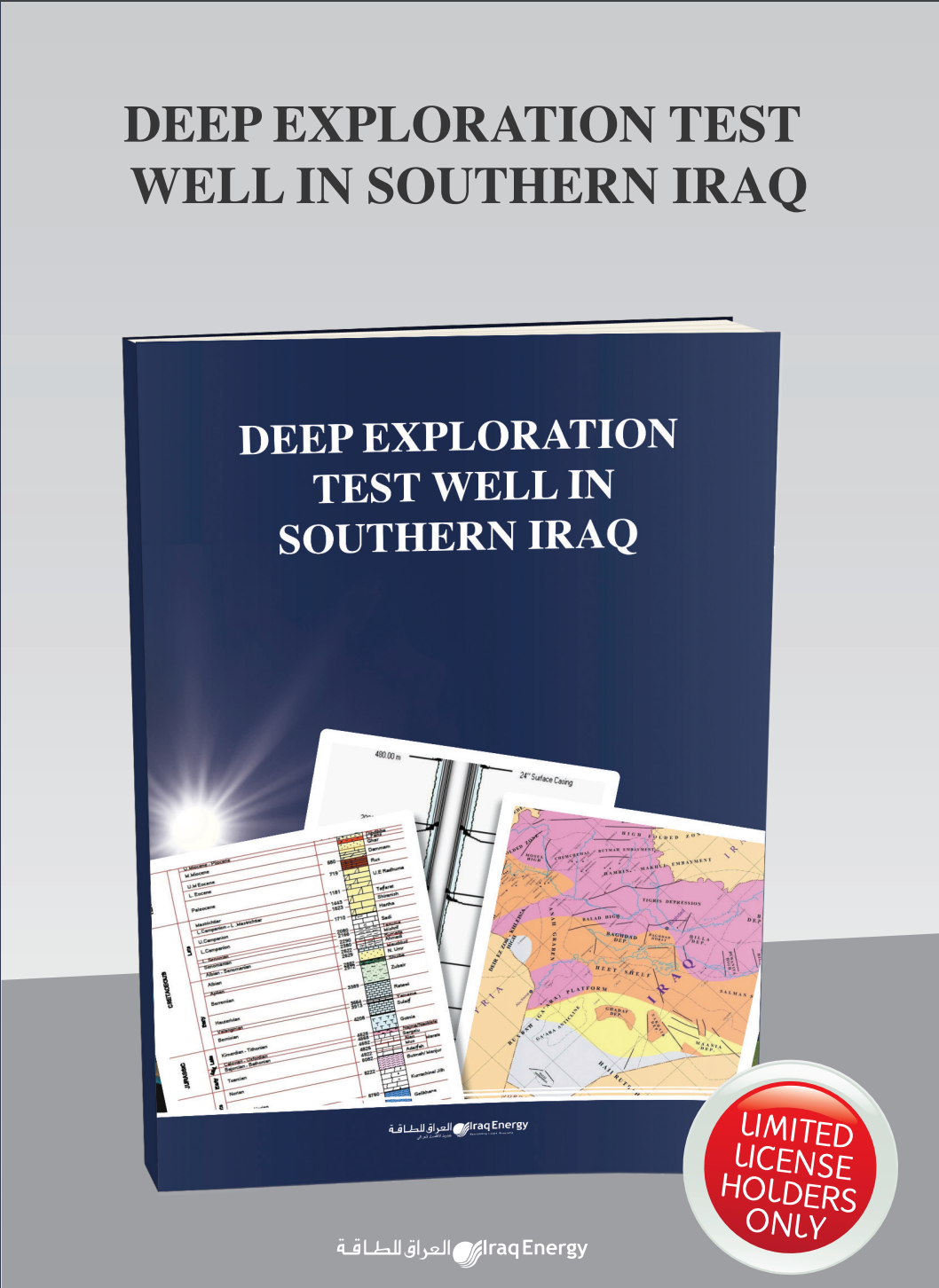 Favorable hydrodynamic conditions exist in the Basra depression with result that most of the structures are likely to be petroliferous containing signicant oil and gas accumulations. Large anticlinal structures and multiple stratigraphic traps can be expected mainly due to the presence of deep-seated Infra-Cambrian to lower- Cambrian salts in the depression. The eect of salt movement during Mesozoic time and the inuence of Zagros Orogeny are thought to be responsible for creating and shaping most of the structures. The location of the deep test well, subject of this study, is situated in South Rumaila Field between well R-172 (TD of 5372m) in North Rumaila and Khadir Al-mai deep well KI-1 (TD of 5837m) see location map (Figure –1). The reference well is chosen to prove the hydrocarbon potential of the Jurassic carbonate Mus formation and to explore Permian carbonate Chiazairi (Khu) formation. The target depth of the location is TD of 7000m TVD from ground level. The Jurassic Mus formation, porous and permeable Dolomite with Limestone partly oolitic, tested light oil in Well R-172. This reservoir, equivalent to Marrat reservoir in Northern Kuwait oil elds, is anticipated to continue having good properties in south east of Iraq (Basrah Basin). The ChiaZairi (Khu) formation is Dolomitic limestone, which is penetrated by many wells drilled in Gulf countries. The formation, producing light oil and condensates there, is expected to be porous and permeable reservoir in the proposed test well location. Two deep wells have so far penetrated the ChiaZairi formation in West and SW of Iraq outside Basrah basin, without nding hydrocarbons. Three wells have penetrated Jurassic and /or Triassic formations in Basrah Basin and proved light oil bearing in well R-172, by testing. The main drilling hazards that will face the drilling of the deep section in the test location are, high pressure and high temperature, mud losses zones at dierent levels, salt owage or creeping in Gotnia formation (tight hole) and gas cut mud at dierent levels. Exploration of deep prospects in Basra Basin can utilize this study to prepare drilling program with some adjustment on formation tops using well data and seismic in any new area in the Basin. Additional advice is available to Consultants and IOC purchasing the study.
Favorable hydrodynamic conditions exist in the Basra depression with result that most of the structures are likely to be petroliferous containing signicant oil and gas accumulations. Large anticlinal structures and multiple stratigraphic traps can be expected mainly due to the presence of deep-seated Infra-Cambrian to lower- Cambrian salts in the depression. The eect of salt movement during Mesozoic time and the inuence of Zagros Orogeny are thought to be responsible for creating and shaping most of the structures. The location of the deep test well, subject of this study, is situated in South Rumaila Field between well R-172 (TD of 5372m) in North Rumaila and Khadir Al-mai deep well KI-1 (TD of 5837m) see location map (Figure –1). The reference well is chosen to prove the hydrocarbon potential of the Jurassic carbonate Mus formation and to explore Permian carbonate Chiazairi (Khu) formation. The target depth of the location is TD of 7000m TVD from ground level. The Jurassic Mus formation, porous and permeable Dolomite with Limestone partly oolitic, tested light oil in Well R-172. This reservoir, equivalent to Marrat reservoir in Northern Kuwait oil elds, is anticipated to continue having good properties in south east of Iraq (Basrah Basin). The ChiaZairi (Khu) formation is Dolomitic limestone, which is penetrated by many wells drilled in Gulf countries. The formation, producing light oil and condensates there, is expected to be porous and permeable reservoir in the proposed test well location. Two deep wells have so far penetrated the ChiaZairi formation in West and SW of Iraq outside Basrah basin, without nding hydrocarbons. Three wells have penetrated Jurassic and /or Triassic formations in Basrah Basin and proved light oil bearing in well R-172, by testing. The main drilling hazards that will face the drilling of the deep section in the test location are, high pressure and high temperature, mud losses zones at dierent levels, salt owage or creeping in Gotnia formation (tight hole) and gas cut mud at dierent levels. Exploration of deep prospects in Basra Basin can utilize this study to prepare drilling program with some adjustment on formation tops using well data and seismic in any new area in the Basin. Additional advice is available to Consultants and IOC purchasing the study.












